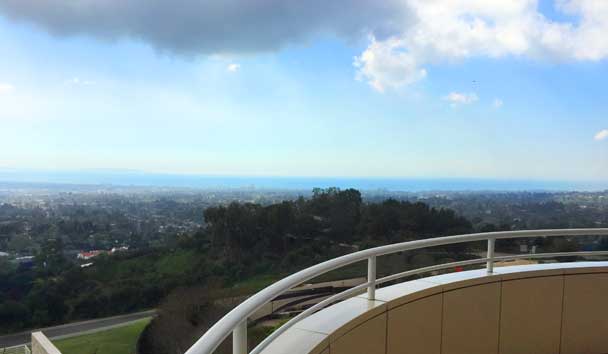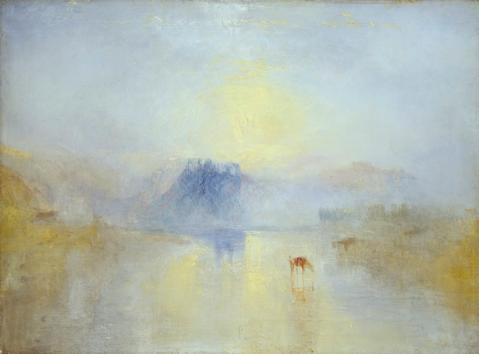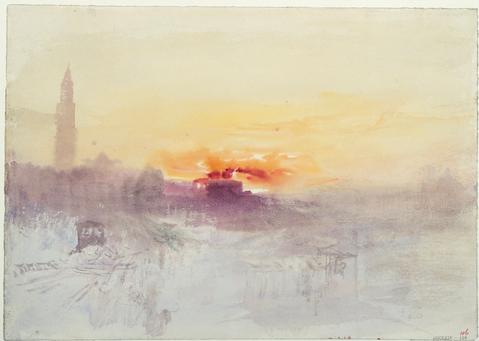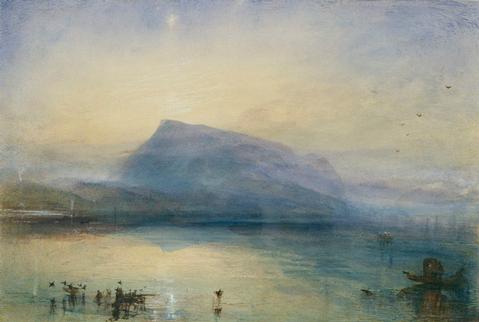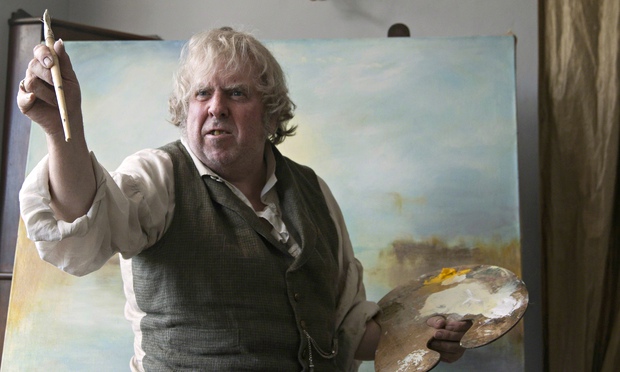Turner canvases from Tate London in LA through May
It had poured rain the night before, and though we eagerly ascended the stairs toward the Getty’s special exhibition space, everyone was stopped in their tracks by the breathtaking view. It was sparkling clear —the kind of air we relish in our drought‐stricken region—and the bright sky was dotted with puffy gray‐and‐white clouds that hung over the blue Santa Monica Bay. I’d like to think Turner would forgive us our delay for being momentarily transfixed by nature.
Extraordinarily inventive and influential in his lifetime, Joseph Mallord William Turner was one of the most lauded British landscape painters of the 19th‐century, a master who captured sea, sky, and land in especially creative ways. Now on view at the Getty Center is J.M.W. Turner: Painting Set Free, the first major West Coast exhibition of the artist’s work. It focuses on the masterpieces he created later in his life—after the age of sixty—when he produced many of his most famous and important works, including numerous paintings that are true standard‐bearers of art history. The show opened last week and runs through May 24, 2015.
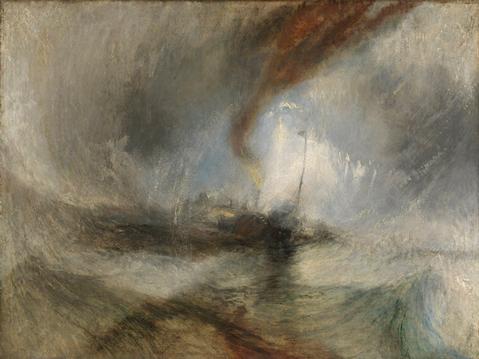
One such masterwork grabs your attention as you enter the first gallery of the exhibition. In Snow Storm: Steam Boat off a Harbour’s Mouth, Turner evokes the tumult of a storm at sea with such vigor that the viewer is immersed in the tumble of the waves. A distant steamboat struggles to stay afloat, but this product of humankind’s latest technology is no match for Mother Nature. Children will enjoy hearing about Turner’s claim that to capture the drama of this storm, he was tied to a ship mast for four hours!
Turner’s continued fascination with the sea includes bold portrayals of whales and their hunters. High‐schoolers who have tackled Moby Dick will be interested to note that both Herman Melville and Turner were inspired by the same reference book, Thomas Beale’s Natural History of the Sperm Whale (1839).
In canvas after canvas, Turner evokes light with a deft hand. He was especially captivated by the combination of light and color he found in Venice, Italy, and a section of the exhibition dedicated to his frequent travels across Continental Europe includes a number of watercolor sketches created on those journeys. His masterful watercolor techniques are on full display in The Blue Rigi, Sunrise (1842), in which a delicate mist drifts across the landscape.
Later works reflect important events of his day, such as spectacular fires that engulfed the Palace of Westminster (1834) and the Tower of London (1841). He also experimented with creating paintings in pairs, often illustrating opposite concepts like peace and war, or working on canvases of unusual shapes, like round or octagonal. The final room of the exhibition is bathed in a glow of natural light from the sky‐lit Getty gallery, allowing Turner’s paintings to pop with color and making for a dramatic ending.
A successful and well‐known public figure in his own day, Turner’s legacy has endured, and is now perhaps even heightened with another spate of popularity some 164 years after his death. In addition to this exhibition, which premiered at the Tate Britain in September 2014 and will travel to San Francisco’s de Young Museum later this year, the artist is the subject of the critically acclaimed 2014 Mike Leigh film Mr Turner. The film is highly-rated by critics, but read a few reviews before you commit to seeing it – the running time is over 150 minutes but the acting is terrific, as is the film’s attention to myriad tiny details that make a painter’s life unique.
The movie underscores Turner’s virtuosity via an often‐repeated story of his performances on “Varnishing Day,” the period of time set aside by the Royal Academy and the British Institution for artists to put final touches on their paintings before their public exhibition. It’s said that in later years, Turner would submit canvases with only the roughest outlines of form and color, relishing the rush of completing them on site. Eyewitnesses report that two of the works now on display in this exhibition—The Hero of a Hundred Fights, (1800–10, reworked and exhibited in 1847) and Burning of the Houses of Lords and Commons, 16th October 1834 (1834–35)—were mostly painted in this spectacular fashion on their varnishing days.
The Getty Center is open Tuesday–Friday and Sunday 10 am–5:30 pm, Saturday 10 am–9 pm, and closed Monday. Admission is free, but parking is $15 ($10 after 5 pm).
J.M.W. Turner: Painting Set Free // Getty Center // 1200 Getty Center Drive // Los Angeles, California 90049
By Stacey Ravel Abarbanel
February 24, 2015

